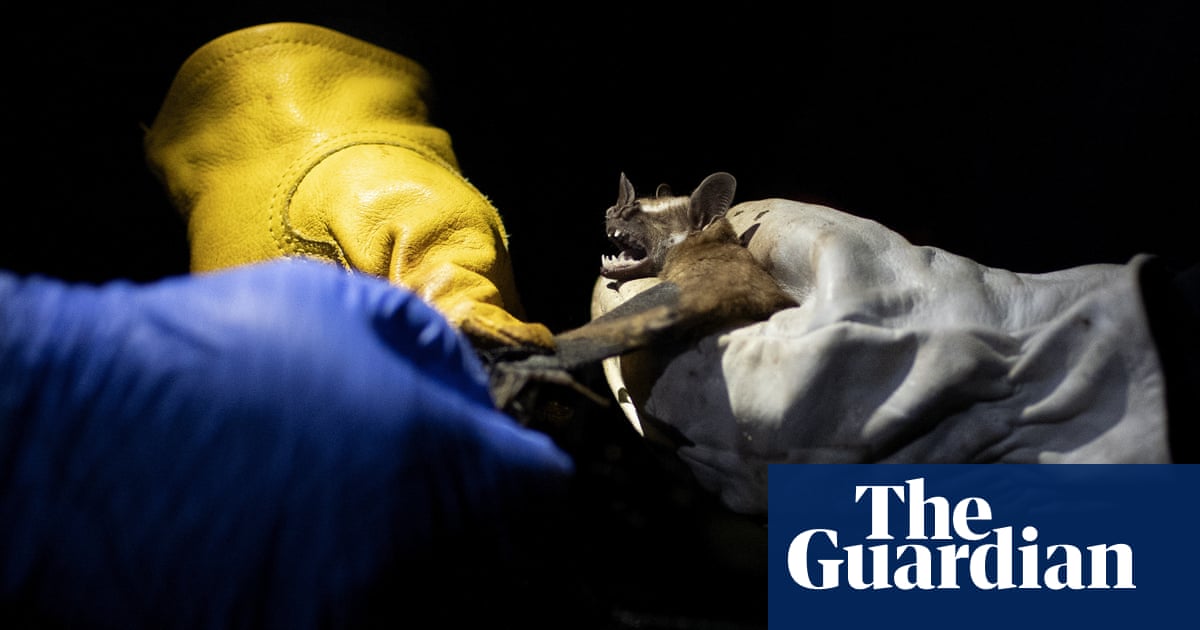Biodiversity loss is biggest driver of infectious disease outbreaks, says study
Biodiversity loss is biggest driver of infectious disease outbreaks, says study The Guardian


Biodiversity Loss Increases the Risk of Infectious Disease Outbreaks

A recent study has revealed that biodiversity loss is the primary environmental factor driving infectious disease outbreaks, making them more dangerous and widespread.
Introduction
The rise of new infectious diseases, often originating in wildlife, has become a growing concern. In a meta-analysis published in the journal Nature, researchers have identified biodiversity loss as the most significant “global change driver” contributing to the increased risk of outbreaks. This is followed by climate change and the introduction of non-native species.
Research Findings
Lead researcher Prof Jason Rohr from the University of Notre Dame in the US stated, “The take-home messages are that biodiversity loss, climate change, and introduced species increase disease, whereas urbanization decreases it.” The study analyzed nearly 1,000 studies on global environmental drivers of infectious disease, encompassing all continents except Antarctica. The severity and prevalence of diseases in plant, animal, and human hosts were examined.
The research focused on five global change drivers: biodiversity loss, climate change, chemical pollution, non-native species, and habitat loss. The findings revealed that four out of five drivers increased disease spread, with habitat loss being the only exception. These results were consistent across both human and non-human diseases.
Interestingly, habitat change, specifically urbanization, reduced the risk of disease due to the concentration of humans in cities. Urban areas tend to have lower disease rates due to better public sanitation and reduced wildlife presence. Prof Rohr explained, “In urban areas with lots of concrete, there is a much smaller number of species that can thrive in that environment. From a human disease perspective, there is often greater sanitation and health infrastructure than in rural environments.”
Implications and Importance
The study’s findings hold significant implications for zoonotic diseases, which have gained increased attention since the Covid-19 pandemic. Many other alarming diseases, such as swine flu and avian flu, also originated in wildlife. Approximately three-quarters of emerging diseases in humans are zoonotic, meaning they can infect both wildlife and domestic animals.
Previous studies have highlighted the links between these diseases and environmental changes, such as the impact of global warming on the spread of malaria. However, it was previously unclear which environmental drivers had the greatest impact. The researchers noted that many of these drivers are interconnected, stating, “For example, climate change and chemical pollution can cause habitat loss and change, which in turn can cause biodiversity loss.”
Addressing the Issue
To mitigate the burden of disease, researchers emphasize the importance of reducing emissions, preventing biodiversity loss, and controlling invasive species. These actions align with the Sustainable Development Goals (SDGs) set by the United Nations to promote global sustainability and address pressing environmental challenges.
In conclusion, this study sheds light on the critical role of biodiversity loss in driving infectious disease outbreaks. By understanding and addressing the environmental drivers of disease, we can work towards a healthier and more sustainable future.
References:
- Study: Biodiversity Loss Increases Risk of Infectious Disease Outbreaks
- The Link Between Zoonotic Diseases and Environmental Change
Related Coverage:
For the latest news and features on biodiversity, follow our biodiversity reporters Phoebe Weston and Patrick Greenfield.
SDGs, Targets, and Indicators
| SDGs | Targets | Indicators |
|---|---|---|
| SDG 3: Good Health and Well-being | Target 3.3: By 2030, end the epidemics of AIDS, tuberculosis, malaria, and neglected tropical diseases and combat hepatitis, water-borne diseases, and other communicable diseases | Indicator not mentioned in the article |
| SDG 13: Climate Action | Target 13.1: Strengthen resilience and adaptive capacity to climate-related hazards and natural disasters in all countries | Indicator not mentioned in the article |
| SDG 14: Life Below Water | Target 14.2: By 2020, sustainably manage and protect marine and coastal ecosystems to avoid significant adverse impacts, including by strengthening their resilience, and take action for their restoration in order to achieve healthy and productive oceans | Indicator not mentioned in the article |
| SDG 15: Life on Land | Target 15.1: By 2020, ensure the conservation, restoration, and sustainable use of terrestrial and inland freshwater ecosystems and their services, in particular forests, wetlands, mountains, and drylands, in line with obligations under international agreements | Indicator not mentioned in the article |
1. Which SDGs are addressed or connected to the issues highlighted in the article?
- SDG 3: Good Health and Well-being
- SDG 13: Climate Action
- SDG 14: Life Below Water
- SDG 15: Life on Land
The issues highlighted in the article are connected to these SDGs because they address the impact of biodiversity loss, climate change, and habitat change on infectious disease outbreaks. These issues have implications for human health and the well-being of ecosystems.
2. What specific targets under those SDGs can be identified based on the article’s content?
- Target 3.3: By 2030, end the epidemics of AIDS, tuberculosis, malaria, and neglected tropical diseases and combat hepatitis, water-borne diseases, and other communicable diseases
- Target 13.1: Strengthen resilience and adaptive capacity to climate-related hazards and natural disasters in all countries
- Target 14.2: By 2020, sustainably manage and protect marine and coastal ecosystems to avoid significant adverse impacts, including by strengthening their resilience, and take action for their restoration in order to achieve healthy and productive oceans
- Target 15.1: By 2020, ensure the conservation, restoration, and sustainable use of terrestrial and inland freshwater ecosystems and their services, in particular forests, wetlands, mountains, and drylands, in line with obligations under international agreements
Based on the article’s content, these targets are relevant as they address the need to combat communicable diseases, strengthen resilience to climate-related hazards, protect marine and coastal ecosystems, and ensure the conservation and restoration of terrestrial ecosystems.
3. Are there any indicators mentioned or implied in the article that can be used to measure progress towards the identified targets?
No, the article does not mention or imply any specific indicators that can be used to measure progress towards the identified targets.
The article focuses more on the drivers of infectious disease outbreaks rather than providing specific indicators for measuring progress towards the targets.
4. SDGs, Targets, and Indicators
| SDGs | Targets | Indicators |
|---|---|---|
| SDG 3: Good Health and Well-being | Target 3.3: By 2030, end the epidemics of AIDS, tuberculosis, malaria, and neglected tropical diseases and combat hepatitis, water-borne diseases, and other communicable diseases | Indicator not mentioned in the article |
| SDG 13: Climate Action | Target 13.1: Strengthen resilience and adaptive capacity to climate-related hazards and natural disasters in all countries | Indicator not mentioned in the article |
| SDG 14: Life Below Water | Target 14.2: By 2020, sustainably manage and protect marine and coastal ecosystems to avoid significant adverse impacts, including by strengthening their resilience, and take action for their restoration in order to achieve healthy and productive oceans | Indicator not mentioned in the article |
| SDG 15: Life on Land | Target 15.1: By 2020, ensure the conservation, restoration, and sustainable use of terrestrial and inland freshwater ecosystems and their services, in particular forests, wetlands, mountains, and drylands, in line with obligations under international agreements | Indicator not mentioned in the article |
Copyright: Dive into this article, curated with care by SDG Investors Inc. Our advanced AI technology searches through vast amounts of data to spotlight how we are all moving forward with the Sustainable Development Goals. While we own the rights to this content, we invite you to share it to help spread knowledge and spark action on the SDGs.
Fuente: theguardian.com

Join us, as fellow seekers of change, on a transformative journey at https://sdgtalks.ai/welcome, where you can become a member and actively contribute to shaping a brighter future.







